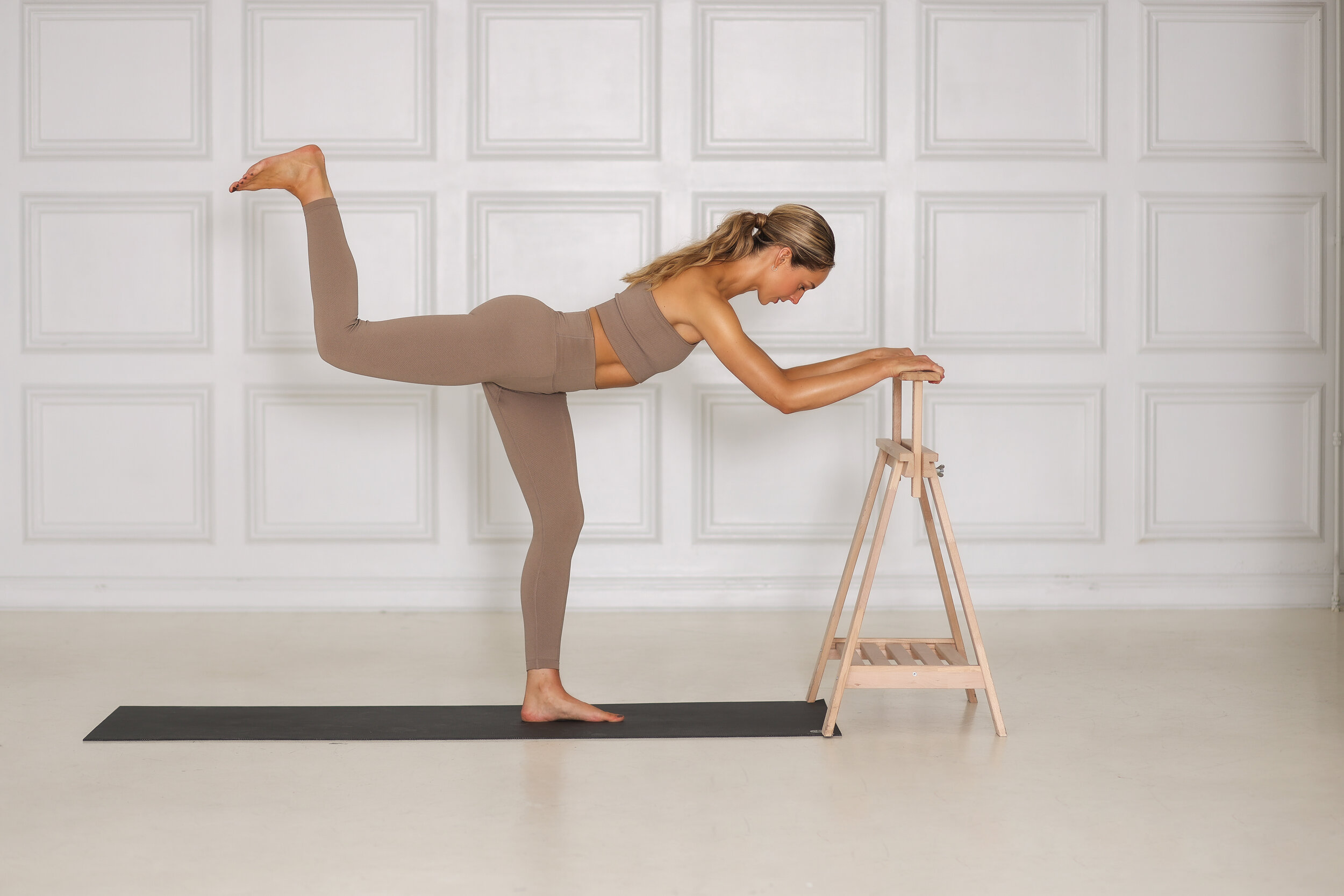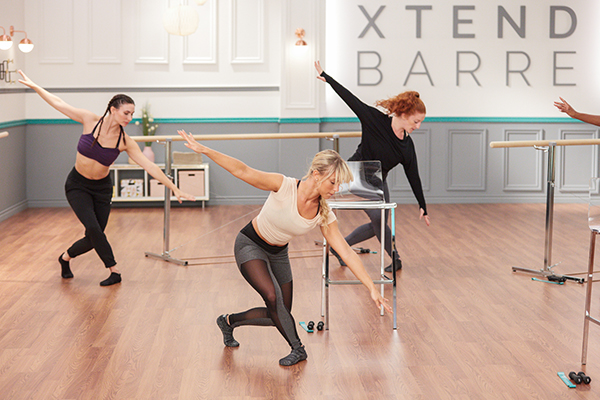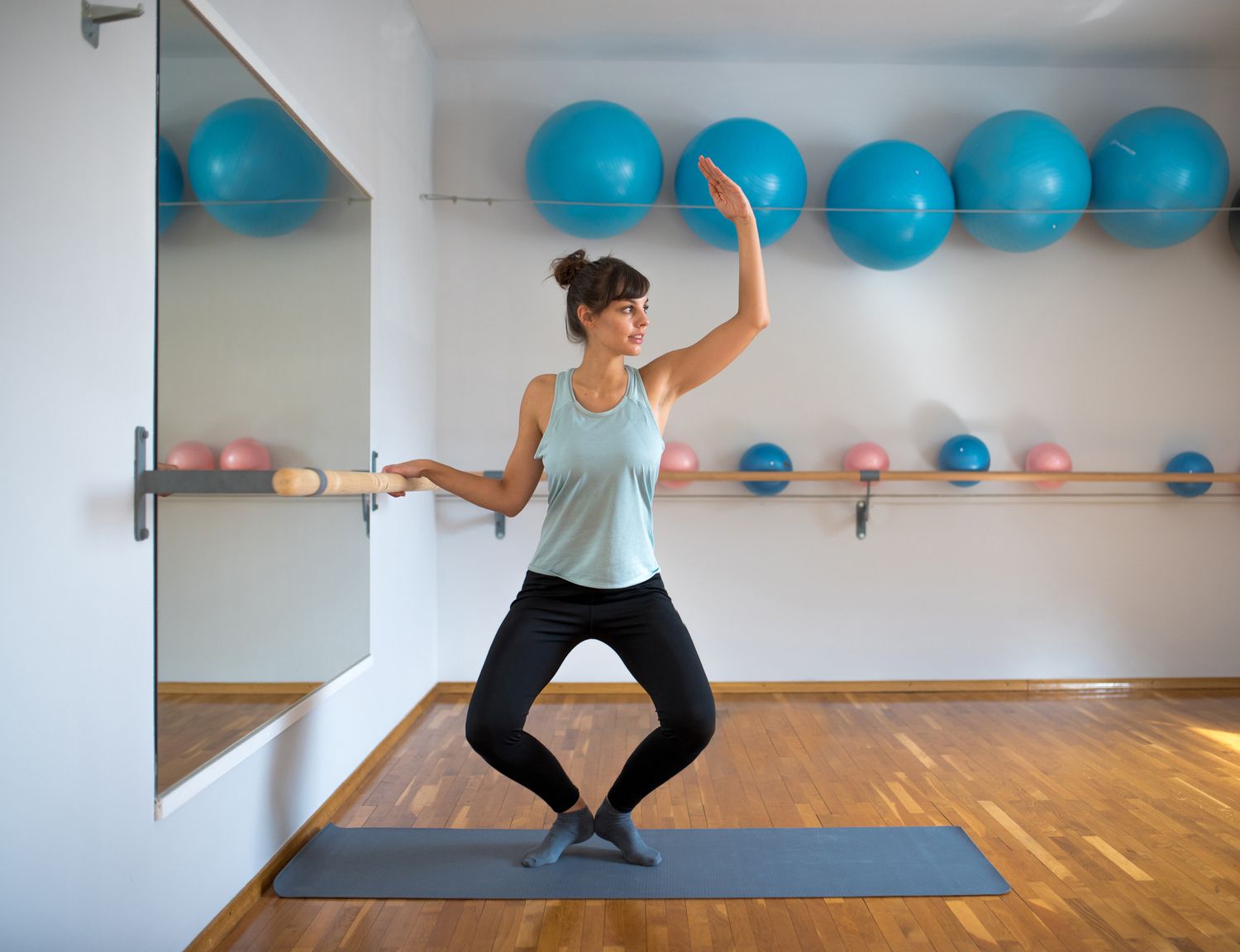Barre is a popular full-body workout blending elements of ballet, Pilates, and yoga. Performed using a stationary ballet barre and integrating small, controlled movements, barre builds core stability, balance, flexibility, and muscular endurance without straining joints or tendons. Practiced regularly, the multifaceted barre method yields numerous physical and mental health gains. This article outlines the top 8 reasons to incorporate barre classes or at-home workouts into your fitness regimen. Read on to learn all about the well-rounded benefits this efficient, low-impact exercise delivers.

Contents
8 Benefits of Barre Exercise
Barre exercise offers a wide range of benefits that can help transform your body and improve your overall fitness. From toning muscles to improving posture, here are 8 key benefits of incorporating barre workouts into your fitness routine:
1. Full-body workout: Barre exercises combine ballet-inspired movements, strength training, and stretching to target multiple muscle groups in your body. This comprehensive approach ensures that you get a complete workout from head to toe.
2. Improved posture: Barre exercises incorporate upper back strengthening and shoulder stabilizing exercises, which can help improve your posture. With the support of the barre, you can maintain proper alignment throughout the exercises, allowing you to move deeper without sacrificing form.
3. Increased strength and muscle tone: By using your body weight, weights, or bands, barre workouts help sculpt and tone your muscles. The small, controlled movements target specific muscle groups, providing a focused and effective workout.
4. Enhanced flexibility: Stretching is a fundamental part of barre exercises, helping to improve flexibility and mobility. Regular barre practice can increase your range of motion, making daily activities easier and reducing the risk of injury.
5. Low-impact exercise: Barre workouts are gentle on your joints, making them suitable for people of all fitness levels, including those recovering from injuries. The low-impact nature of barre exercises minimizes stress on your joints while still providing an intense workout.

6. Improved balance and stability: The precise movements and focus on core engagement in barre workouts can improve your balance and stability. As you strengthen your core muscles, you develop better control over your body, reducing the risk of falls and providing a solid foundation for other physical activities.
7. Increased endurance and stamina: Barre exercises incorporate isometric holds and repetitive movements, which can improve your endurance and stamina over time. Regular barre practice can help you build the stamina needed for longer workouts and daily activities.
8. Core strength: Barre exercises place a strong emphasis on engaging and strengthening the core muscles. By targeting the abdominals, back, and pelvic floor muscles, barre workouts can help you develop a strong and stable core.
Barre Workouts vs. Traditional Cardio
When comparing barre workouts to traditional cardio exercises, there are several key differences to consider. Both types of exercise have their unique benefits and can be effective in improving fitness levels. Let’s take a closer look at each:

1. Barre Workouts:
- Barre workouts focus on small, deliberate movements that target specific muscle groups.
- These workouts use your own body weight for resistance, with optional props like weights, balls, and bands for added challenge.
- The exercises in barre classes are low-impact, gentle on joints, low back, and feet.
- The goal is to work the muscles to the point of fatigue and then stretch for relief.
- Proper form, body alignment, and posture are emphasized, leading to strengthened core muscles and a leaner appearance.
- Aerobic exercise is incorporated to increase cardiovascular endurance and boost metabolism for fat burning.
- Barre workouts typically last around 60 minutes, with little rest between exercises to keep the muscles engaged and build stamina.
2. Traditional Cardio:
- Traditional cardio exercises involve more dynamic, full-body movements performed at a faster pace.
- This form of exercise often includes activities like running, cycling, and high-intensity interval training (HIIT).
- Cardio workouts aim to elevate heart rate, increase endurance, and burn calories.
- They can be more challenging and intense compared to barre workouts.
- Traditional cardio exercises provide a higher impact on joints and may not be suitable for individuals with certain health conditions.
- These workouts often incorporate heavier weights or no weights at all, using larger movements to engage multiple muscle groups.
Who Should and Shouldn’t Take Barre Classes?
If you’re considering taking barre classes, you may be wondering if they are suitable for everyone. Here’s a breakdown of who should and shouldn’t take barre classes:
1. Who Should Take Barre Classes?
Barre classes are a fantastic option for a wide range of individuals, including:
- Beginners: Barre workouts are great for beginners, as they focus on form, alignment, and technique. The low-impact nature of barre exercises makes them accessible for those who are just starting their fitness journey.
- People looking to improve posture: Barre classes incorporate exercises that target the upper back and shoulders, helping to strengthen and stabilize these areas. This can lead to improved posture and a more aligned body.
- Men: Despite the misconception that barre is predominantly for women, men can also benefit from this type of exercise. By using resistance from body weight, weights, or bands, men can sculpt their muscles and create a leaner physique.
- Those seeking a full-body workout: Barre classes target every major muscle group, ensuring that you get a well-rounded workout. By participating in barre exercises regularly, you can build and maintain muscle strength throughout your body.
2. Who Shouldn’t Take Barre Classes?
While barre classes are generally suitable for most individuals, there are a few cases in which caution should be exercised. Consider the following:
- Individuals with severe joint or muscle issues: If you have severe joint or muscle issues, it’s essential to consult with a healthcare professional before starting barre classes. They can assess your condition and advise on whether barre exercises are appropriate for you.
- Those with certain medical conditions: People with specific medical conditions, such as cardiovascular issues or chronic injuries, should consult their doctors before engaging in barre workouts. Instructor guidance and modifications may be necessary to ensure a safe experience.
Frequently Asked Questions
How many times a week should I do barre to see results?
To see results from barre exercise, aim to do at least three workouts per week. Consistency is key for improving strength, flexibility, and overall fitness level. Focus on form and alignment during each exercise.
Is it OK to do barre everyday?
Yes, it is okay to do barre exercise every day, especially the shorter classes. However, it is important to have at least one rest day per week to allow your body to recover.
Can you tone your body with barre?
Yes, barre workouts are effective for toning and strengthening the body while also promoting mental calmness. It is a low-impact, high-intensity exercise that helps you achieve your weight loss, muscle tone, and flexibility goals.

Hello, I’m Ravindra. Over the years, I’ve immersed myself deeply into the world of fitness and health, transforming both my body and mind. Writing has allowed me to share my journey, insights, and expertise with those just starting out and seasoned fitness enthusiasts alike. Beyond just routines and diets, I believe in inspiring others to adopt a holistic approach to well-being.
